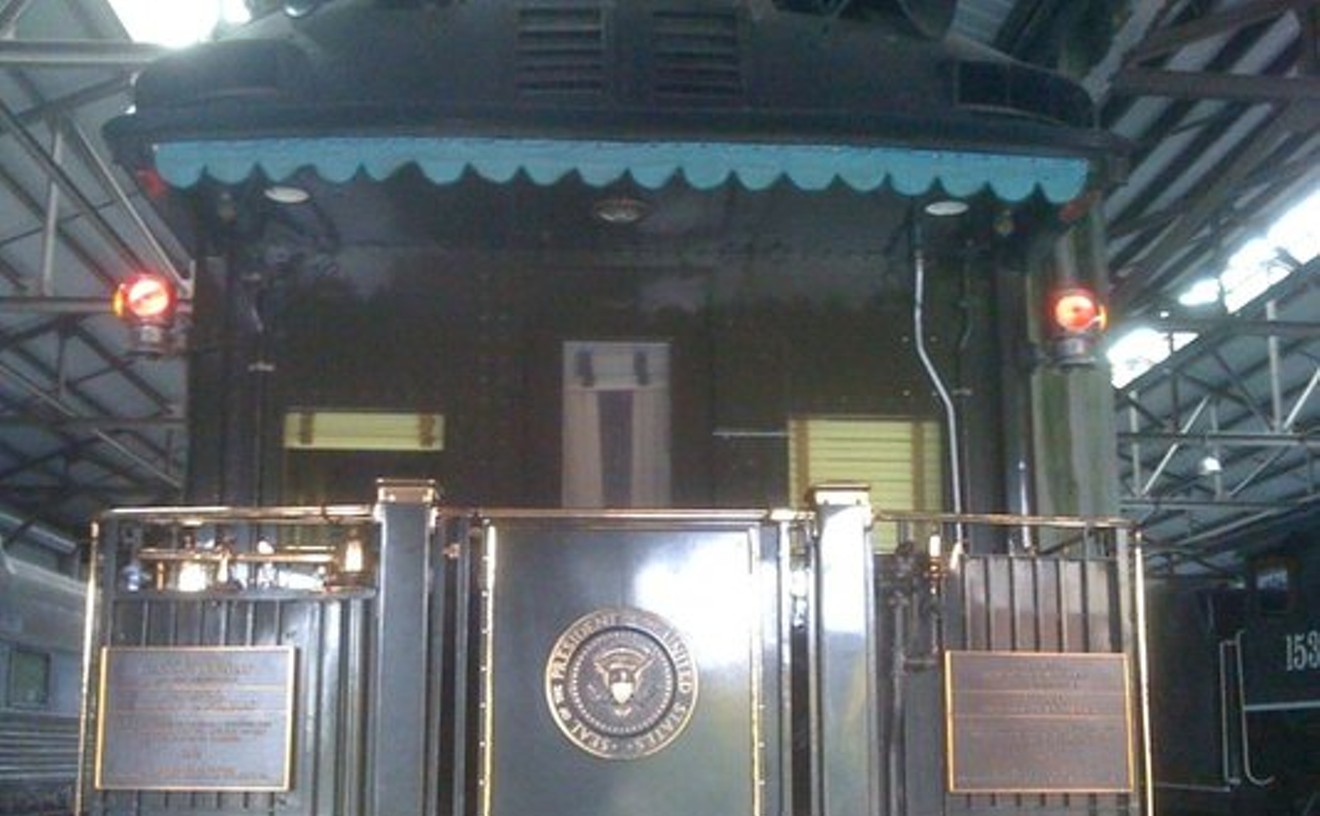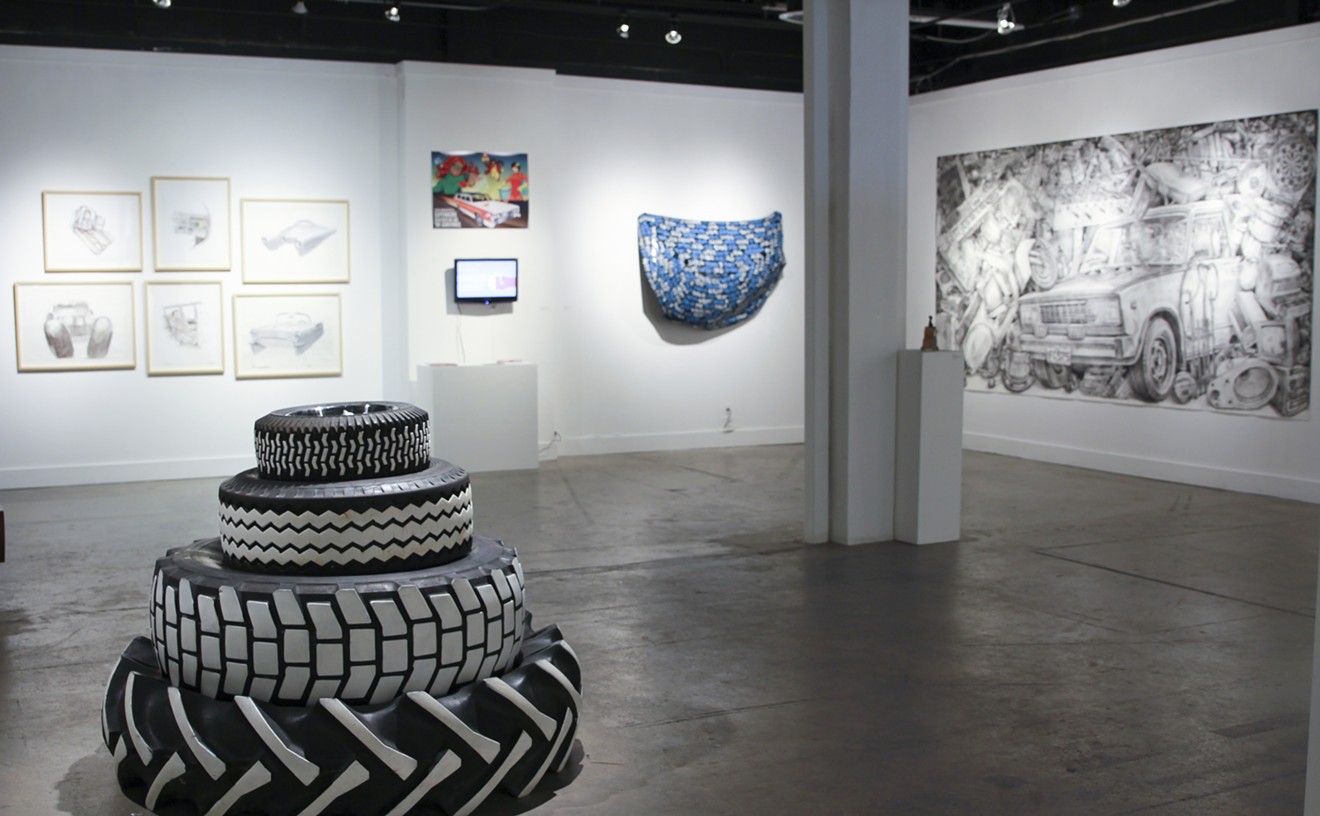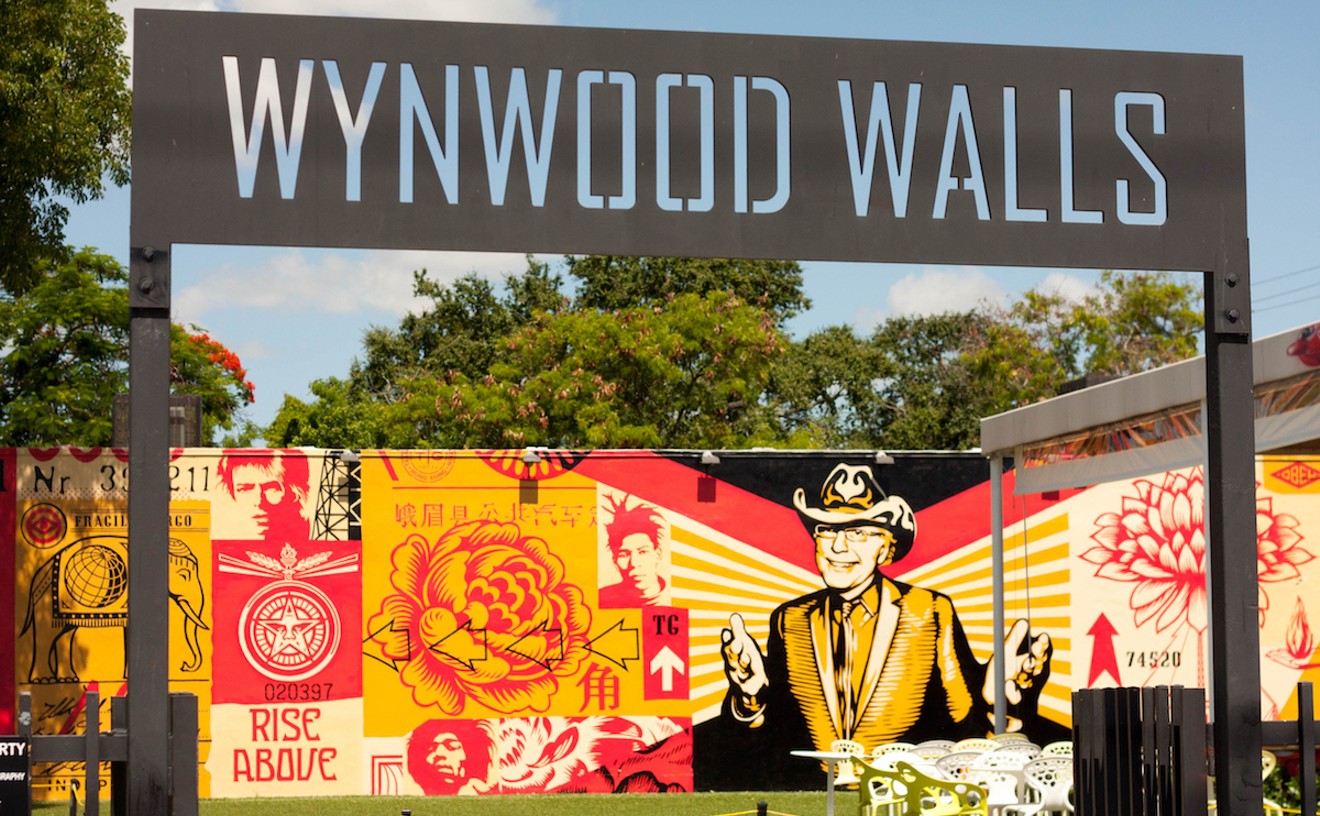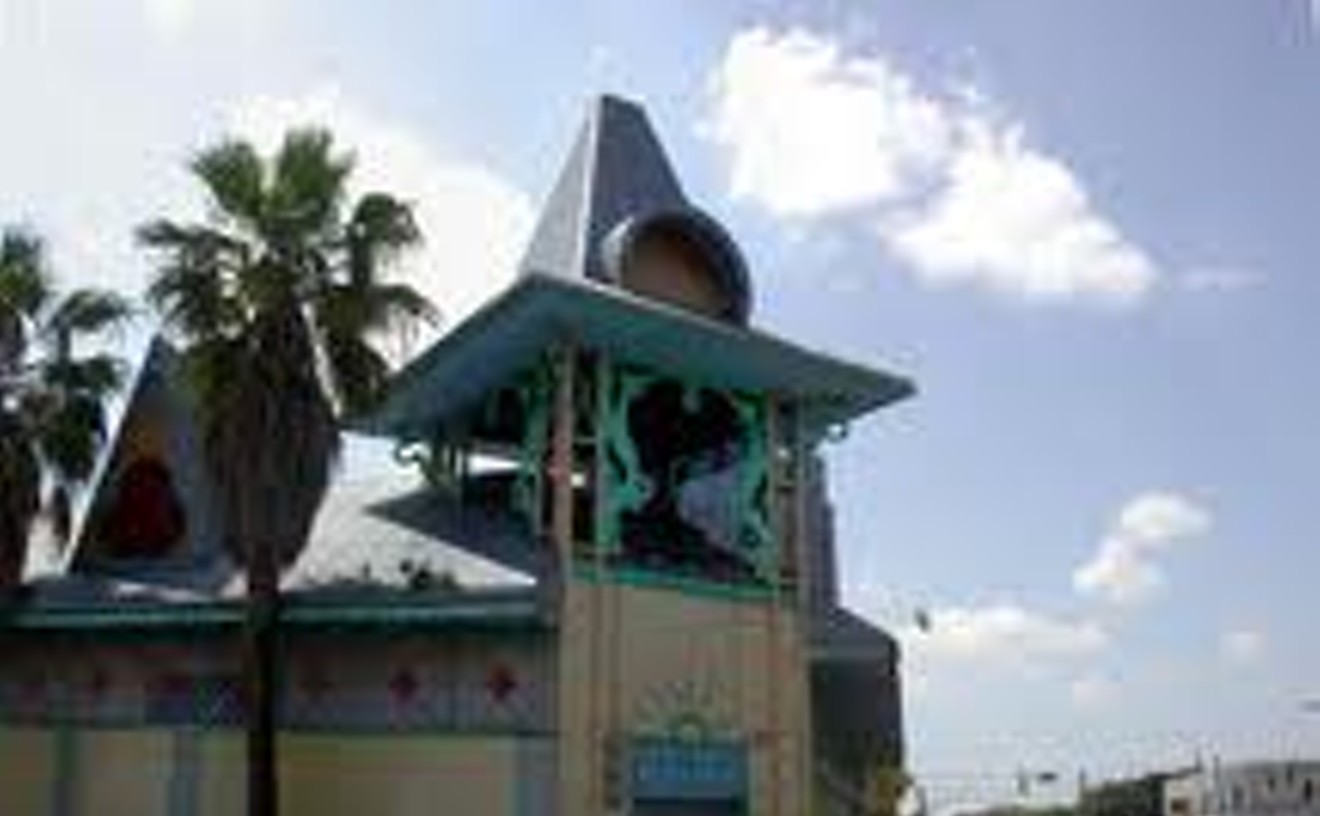Best Kids' Thrill
Gold Coast Railroad Museum

From an early age, kids show a glowing fascination for trains and train sets. Maybe it's because they're drawn to the power and ingenuity of a train, to the rumble of steam and coal and thundering wheels. Maybe it's the innate sense of exploration that only a locomotive can satisfy. Or maybe it's because trains are just so friggin' cool. But that inherent love has been drowned out in a digital world of exploding videogames and screaming cartoons. It's still there, though. You can find it again at the Gold Coast Railroad Museum, which features more than 30 historic trains, including an authentic president's car that was once used by FDR, Harry Truman (the same car where he took his iconic "Dewey Defeats Truman" photo), and Ronald Reagan. With more than three miles of track out back, kids can hop a link train, as well as a vintage coach that everyone can ride. The museum also boasts a massive model train collection and offers several fun and interactive activities. Admission is $6 for adults and kids 12 and older, $4 for those under 12, and free for children under 3. All aboard!
- 12450 SW 152nd St., Miami, 33177 Map
- 305-253-0063
- gcrm.org
Best Local Artist
Edouard Duval-Carrié
We love the work of Edouard Duval-Carrié for many reasons. Not the least of which is that we snagged one of his iconic sculptures for $20 at a Wynwood thrift shop during Art Basel 2007. The kiwi-green resin figure represented Agoue, Haiti's version of Poseidon. It was appraised at $500 by Bernice Steinbaum, the artist's longtime dealer, less than a mile up the road from where it was purchased. Duval-Carrié's work is in the permanent collections of the Bass Museum of Art and the Miami Art Museum. He is known for weaving African fables, classical mythology, Haitian and world history, and contemporary events into a rich symbolic tapestry of haunting imagery. When experiencing his work, you can almost hear the resurrection drums tapping out the messages of Haiti's vodou pantheon, reminding one of that Caribbean nation's mysterious cultural legacy. This past December at the Little Haiti Cultural Center, Duval-Carrié organized and curated "Global Caribbean," a world-class exhibit featuring the work of 25 of the region's top talent. In March, he contributed to the Haitian earthquake relief efforts by hosting a highly successful fundraiser during the ArteAmericas Fair at the Miami Beach Convention Center.
Best Public Art
Primary Flight
The streets of Wynwood are one big outdoor museum. There's no entrance fee, the art is world-caliber, you can stay as long as you like, and (almost) no one will get mad if you piss in the bushes. Take that, MOMA! It's mostly all thanks to the folks behind the world's largest site-specific street-level mural installation project. Every year, some of the best street painters in the world converge for Art Basel week. Since 2006, a guy named Books IIII has corralled the talent, mediums, and paint for a creative explosion called Primary Flight. If the names London Police, Ron English, Shepard Fairey, Dolla, El Mac, Retna, and Typoe (to name a few) mean anything to you, you already know. If they don't, you need to examine the acres worth of fantastic, bold, and vibrant imagery that adorn wall surfaces all over this hood.
Best Art Gallery
Spinello Gallery
Anthony Spinello's rise on the local art scene has been meteoric. Just a little more than three years ago, he was organizing tiny yet well-curated shows shoehorned into the even tinier living room of his Wynwood walk-up apartment. Soon the lad's comet began burning brightly and local collectors took notice, as did South Florida's emerging talent, who began begging to join the brash young dealer's stable. Spinello quickly became a staple on the art fair circuit and opened a short-lived space in Wynwood, where his shows were always edgy and popular with the Second Saturday crowds. Today he calls the Design District home, and his annual December group show — a micro fair lampooning Art Basel — has become a must-stop for locals and visiting glitterati during the winter arts confab. Spinello recently doubled the size of his space, and his stable boasts some of South Florida's top young talent, including Lee Materrazi, Christina Pettersson, Santiago Rubino, Manny Prieres, and Agustina Woodgate. He recently invited the public to do their laundry in a washer installed for an upcoming show. It's a far cry from when Spinello had to hand-wash his dirty drawers in the kitchen sink while preparing for his first Wynwood show.
- 2930 NW Seventh Ave., Miami, 33127 Map
- 646-780-9265
- spinelloprojects.com
Best Street Art
Obama Mural on NE 54th Street at North Miami Avenue
There have been entire books dedicated to Miami's street art, but we're fascinated by the handful of Obama murals that grace the streets of Little Haiti and Liberty City. Depending on the neighborhood, his skin tone and ethnicity varies. Some portraits look like something the Oval Office would commission: Obama flashing a reassuring smile, an American flag waving in the distance, and the grand architecture of the White House sitting like a palace in the background. He's been painted alongside Martin Luther King Jr. under I-95 overpasses and then subsequently removed by order of the FDOT. But there's one on a corner in Little Haiti by local artist Serge Toussaint that captures the president rather than the campaigner. Donning a Mr. Rogers-esque blue jacket and a red tie, Obama gazes up, over the blighted gas station across the street. His brow is furrowed with concern, and his mouth is ever so slightly agape. It's as if Toussaint, who completed the mural before the election, had visions of the recent shitstorm. He saw the housing bubble bursting, the Dow tanking, unemployment numbers peaking, and birds in the Gulf of Mexico covered in BP oil.
Best Art Exhibit
"Reverón's Dolls"

This little seen but deftly mounted exhibit, organized at the now-moribund Tachmes space by indie curator Jorge Hulian, featured 37 haunting photographs by Venezuelan artist Luis Brito. The shutterbug transported viewers into the bizarre world of his compatriot Armando Reverón, who died in 1954 following a steady decline into dementia. One of Latin American art history's most enigmatic figures, Reverón was known for creating a harem of life-size, anatomically correct muses out of burlap sacks and sundry detritus scavenged from garbage heaps. Clad in a loincloth, he lived in a ramshackle compound he christened El Castillete, created from palm fronds and trash, where he communed with nature and led a near-aboriginal existence. Hailed as one of the first multimedia artists of his era, the mad genius used his dolls as models for his paintings and was rumored to have consummated his relations with the moldy muses, later claiming to "fathering children" with them. Brito documented the fetid, moth-eaten carcasses of Reverón's harem for posterity, and the results on view at the Tachmes space, painted in gloomy twilight tones for the occasion, were hair-raising.
- 3930 NW 2nd Ave., Miami, 33127 Map
- 305-572-9015
Best Art Compound
Bakehouse Art Complex

Photo by Melissa Nunez
“Autopia: Road Trips from the Cold War to the Present” during Miami Art Week 2016
In 1987, some hippy artists lost their pad in the Grove, formed a nonprofit, and bought an old bread factory in Wynwood. Back then, the area's main offerings were heroin, guns, and abandoned bread factories. Nowadays, the neighborhood is the epicenter of Miami's art world. While a new gallery seems to pop up and shut down every week, the Bakehouse Art Complex is thriving in its 24th year in the game. Here, more than 70 professional working artists use their studios, two common galleries, photo and print labs, and wood-working, ceramics, and welding areas to express themselves. They are handpicked by a jury and come not only from Miami but also all over the world. The Bakehouse is open to the public every day from noon to 5 p.m., and guests are welcome to visit and interact with the artists in their environs. There are also art classes, membership opportunities, and a monthly art party. This is one awesome place.
- 561 NW 32nd St., Miami, 33127 Map
- 305-576-2828
- bacfl.org
Best Art Museum
Bass Museum of Art

Photo by Zachary Balber
Last year, the Bass took a radical departure from the musty offerings of baroque paintings and uneven programming that led to the institution's decline. In spring 2009, museum visitors were greeted at the entrance by a local artist who had buried himself in the ground with only his head exposed like an Indian fakir. The neck-craning moment occurred during the opening of "The Best of Bert Rodriguez — Greatest Hits Vol. 1." The occasion loudly telegraphed that new director Silvia Karman Cubiñá was aggressively riding herd on a cutting-edge transformation of the museum. This past December, during Art Basel, Karman Cubiñá further cemented her reputation among the art world cognoscenti by landing "Where Do We Go From Here? Selections from La Colección Jumex," marking the stateside debut of the largest privately held collection in Latin America. Owned by Mexican juice mogul Eugenio Lopez Mendoza, the potent display featured 75 head-turning works in diverse media culled from a legendary collection that numbers some 2,000 pieces. Selections included a giant chicharrón, a decrepit wheelbarrow groaning under a mountain of gaudy Christmas ornaments, and a stainless steel door to nowhere and boasted some of the contemporary art world's top names. It was one of Art Basel's biggest draws, made funkier by a concurrent exhibit showcasing Carlos Rolon, AKA Dzine, whose wacky retrophilia included a tricked out low rider tricycle that looked like it was hijacked from Liberace's garage. With Karman Cubiñá firmly at the helm, the Bass shows steady signs all hands are on deck and sailing full steam ahead.
- 2100 Collins Ave., Miami Beach, 33139 Map
- 305-673-7530
- thebass.org
Best Public Art Nook
The Wynwood Walls

Courtesy of Wynwood Walls
The concept is simple: Keep the spirit of Wynwood's emerging street art scene, only curate it more tightly. Commission 15 muralists from around the world to cover the outdoor space. Add grass, tables, and a basketball hoop. Open it to the public free of charge. That's what collaborators Tony Goldman and Deitch Projects did on a still-gritty stretch of NW Second Avenue, next door to Joey's Italian restaurant. At the bright, enclosed space, each painter gets his or her own towering wall, which serves as a sort of urban canvas. It's a great place to sit, have a cup of coffee, and talk. One wall displays the face of a Burmese woman; another boasts a cartoon duck; a third shows spacey, graffiti-like patterns. The project began during Art Basel 2009. Now, 15 more walls are on the way, and it still feels like a secret.
- 2520 NW Second Ave., Miami, 33127 Map
- 305-531-4411
- thewynwoodwalls.com
Best Museum
Haitian Heritage Museum

So, what is the Haitian-American community to do when trying to connect with its roots while away from the motherland? Build a 60,000-square-foot museum in a neighborhood with the largest Haitian population outside the island. Located on the outskirts of Little Haiti, the Haitian Heritage Museum is a nonprofit organization committed to highlighting and preserving Haiti's rich culture and heritage. View the brightly colored paintings depicting scenes of agricultural workers on ox carts, and lush landscapes filled with colonial-era families frolicking under powder-blue skies, or take in the hand-carved folk art scattered across the cherry wood floors. Listen to local Haitian musicians perform on bongos and guitars, and learn about Haitian literature and Oswald Durand, dubbed the Haitian Shakespeare. Kiddies can soak up the rich culture through Ayiti Exposé, the museum's signature program that provides outreach cultural workshops to Miami-Dade County Public Schools. Visit the only museum in the world outside of Haiti keeping the spirit of this courageous people alive. Hours are 10 a.m. to 5 p.m. Tuesday through Friday.
- 3940 N. Miami Ave., Miami, 33127 Map
- 305-371-5988
- www.haitianheritagemuseum.org





